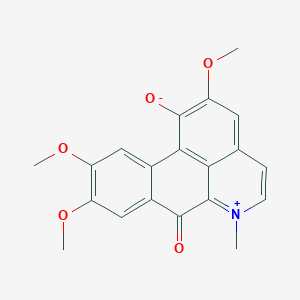|
Name: Etoxeridine
Type: Opioid
AKA: N/A

|
|
II. Natural Derivative
Synthetic substance, no natural derivative
 |
|
III. Chemical Profile (IUPAC name)

|
|
IV. History
Etoxeridine, a synthetic opioid, was developed in the mid-20th century. It was studied for its analgesic properties and has historical significance in the research of synthetic opioids and their effects on pain management.

|
|
V. Legal Information
Etoxeridine is a synthetic opioid with analgesic properties. It is controlled under opioid regulations in many regions due to its potential for abuse. The global trend is towards increased control to prevent misuse and manage addiction. [Source: UNODC].
US Federal Schedule - I
Schedule I drugs, substances, or chemicals are defined as drugs with no currently accepted medical use and a high potential for abuse. Some examples of Schedule I drugs are: heroin, lysergic acid diethylamide (LSD), marijuana (cannabis), 3,4-methylenedioxymethamphetamine (ecstasy), methaqualone, and peyote.
Key US Federal Policies:
Controlled Substances Act. Public Law: Public Law 91-513 (text can be found on GovInfo) (https://www.dea.gov/drug-information/csa). Date enacted: October 27, 1970.
|
|
VI. Physical Effects
Etoxeridine, an opioid analgesic developed in the mid-20th century, is used for pain relief. It acts as a downer, causing significant sedation and analgesia. Physical impacts include respiratory depression, decreased heart rate, and constricted pupils. Short-term use is effective for severe pain, but long-term use may lead to dependence and tolerance. Overdose risks include severe respiratory depression and potential death. Safe use requires careful dosing and medical supervision. Recent research examines its analgesic efficacy and safety profile.  |
|
VII. Psychological Effects
N/A
 |
|
VIII. Culture
Etoxeridine is a synthetic opioid used for pain relief, classifying it as a downer. Short-term use alleviates severe pain, while long-term use can lead to dependence and tolerance. Overdose risks are extremely high, causing respiratory depression and potentially fatal outcomes. Safe dosages are strictly prescribed, often in microgram quantities. Recent research highlights its potency and associated risks of misuse. Physical effects include drowsiness, constricted pupils, and respiratory depression.
 |
